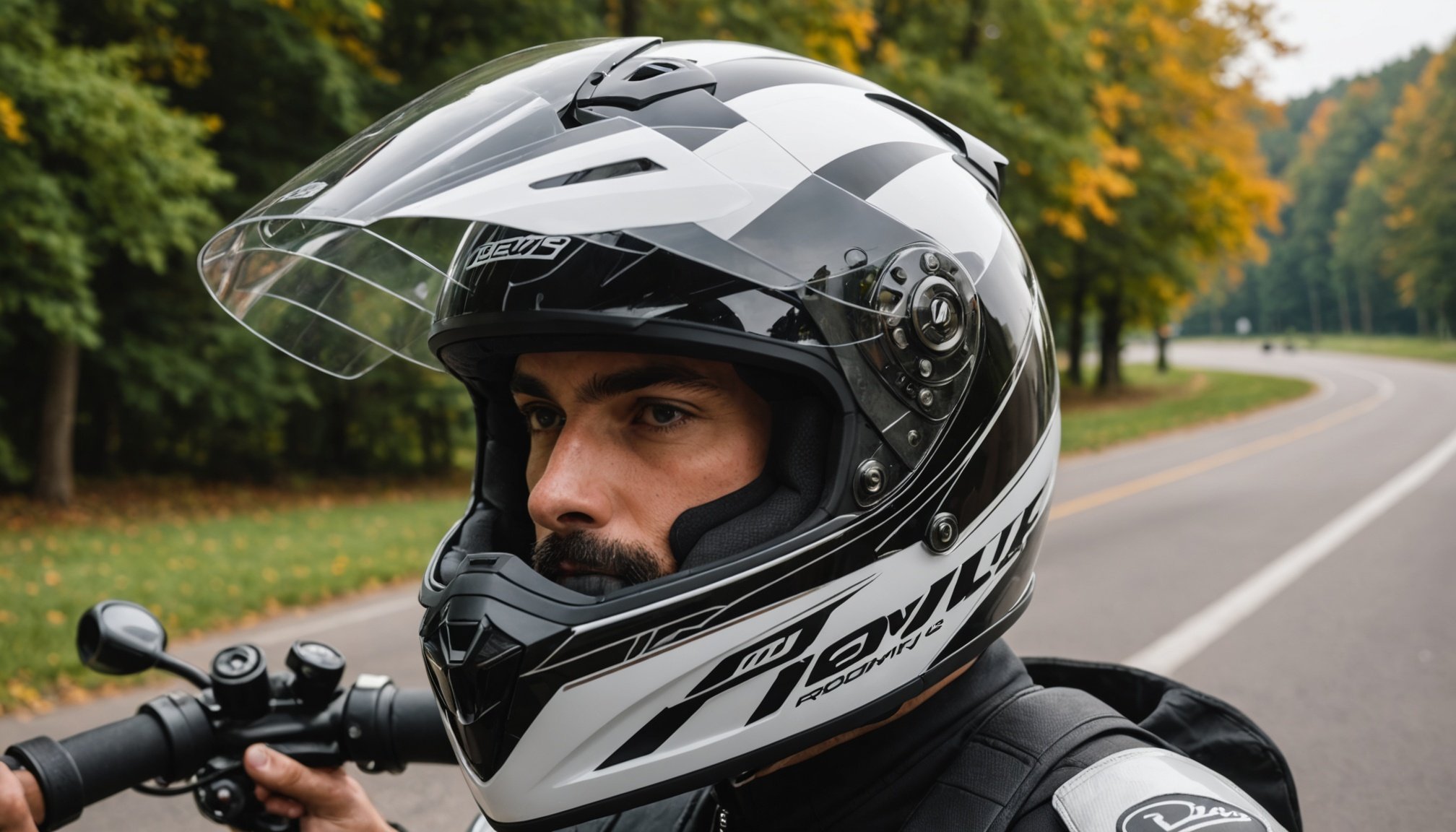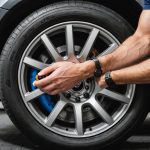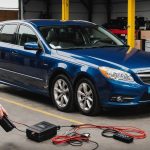Choosing the right helmet can make all the difference in ensuring your safety while riding a motorcycle. With a myriad of options available, understanding the key features to look for in a helmet is essential for every rider. This guide aims to provide you with a comprehensive overview of what constitutes the best choice for protecting your head on the road. From fit to comfort and visor types, let’s delve into what makes a motorcycle helmet not just a piece of gear, but a potential life-saving investment.
The Importance of Fit and Comfort
When considering a new motorcycle helmet, the question of fit and comfort naturally arises. A helmet that fits well not only enhances your safety but also ensures a more enjoyable riding experience.
This might interest you : How do you troubleshoot common motorcycle engine issues effectively?
The Right Fit
A helmet that fits correctly should snugly cover your head without causing any uncomfortable pressure points. It shouldn’t move around when you shake your head. To achieve this, you must focus on the size and shape of the helmet:
- Size: Measure the circumference of your head, usually an inch above your eyebrows. Match this measurement with a helmet sizing chart for the brand you’re considering.
- Shape: Helmets are often categorized into round, intermediate, and long oval shapes. Understanding your head shape is crucial to finding a helmet that offers the best fit.
Comfort Features
Comfort is directly linked to how often you’ll want to wear your helmet. Look for the following features:
In parallel : How can you prepare for a motorcycle road trip to avoid common pitfalls?
- Padding: High-quality helmets offer removable and washable liners. They’re usually made from moisture-wicking materials to keep you cool and dry.
- Ventilation: Adequate airflow can make a significant difference, especially on long rides. Helmets with multiple vents allow air to circulate, reducing heat build-up.
- Weight: A helmet that’s too heavy can cause neck strain over long periods. Composite materials offer lightweight protection without compromising safety.
Finding a helmet that offers the perfect blend of fit and comfort ensures you’re ready for any road ahead, confident and protected.
Safety Standards and Certifications
The primary purpose of a motorcycle helmet is to provide protection. To ensure this, helmets undergo rigorous testing and must meet specific safety standards. Familiarizing yourselves with these standards can help you make informed decisions.
DOT Certification
In the United States, the Department of Transportation (DOT) sets the minimum safety standards for helmets. A helmet with a DOT certification guarantees a certain level of impact protection.
- Importance: DOT-certified helmets undergo testing for penetration resistance and impact attenuation.
- Label: Look for the DOT sticker on the back of the helmet for authenticity.
Other Certifications
Internationally, there are other certifications you may encounter:
- ECE 22.05: Used in Europe, this standard involves more rigorous testing than the DOT standard.
- Snell M2020R/M2020D: An optional certification that indicates a helmet has passed stricter testing, accounting for roll-off resistance and impact at higher energy levels.
What to Consider
Understanding safety standards helps ensure you’re choosing a helmet that offers adequate protection. While the DOT certification is a reliable baseline, seeking helmets with ECE or Snell certifications can provide added peace of mind. Remember, cheap helmets might save money now but could cost much more in terms of safety.
Types of Motorcycle Helmets and Their Features
The diversity in helmet styles means there’s a perfect helmet for every type of rider. Each style offers different levels of protection and comfort, depending on your needs and preferences.
Full-Face Helmets
Full-face helmets cover the entire head, including the face and chin. They are the safest type of helmets, offering maximum protection.
- Protection: Covers the head, face, and chin area, protecting against debris, wind, and weather.
- Visor: Usually equipped with a clear visor that can be swapped for tinted or anti-fog options.
- Sound Insulation: Offers the best noise reduction, allowing for a quieter ride.
Open-Face Helmets
Also known as three-quarter helmets, these cover the top, back, and sides of your head but leave the face open.
- Visibility: Greater peripheral vision and sense of openness.
- Less Weight: Lighter than full-face helmets but with less protection.
Modular Helmets
These hybrid helmets offer the flexibility of an open-face style with the protective capacity of a full-face helmet, thanks to their flip-up chin bar.
- Versatility: Ideal for riders who need to frequently communicate or stop and go frequently.
- Heavier: Due to the additional mechanisms, they are usually heavier than standard full-face helmets.
Dual-Sport Helmets
These helmets are designed for both on-road and off-road use, combining elements from both full-face and motocross styles.
- Visor: Extended visor with better breathability and a wider field of vision.
- Aerodynamics: The aerodynamic design reduces lift and drag at higher speeds.
Choosing the right type of helmet involves evaluating your riding habits and environment. Whether you prioritize full protection or value comfort and fit, there’s a helmet designed to meet your needs.
Advanced Features and Technology
As technology progresses, so do the features offered by modern motorcycle helmets. Today’s helmets come equipped with a range of advanced features meant to enhance your riding experience while ensuring safety.
Bluetooth Connectivity
Many modern helmets come with built-in or compatible Bluetooth systems, allowing riders to:
- Communicate: Easily chat with fellow riders through intercom systems.
- Navigation: Access GPS directions directly through helmet speakers.
- Entertainment: Listen to music or podcasts during long rides.
Visor Technology
The visor is a critical part of your helmet, and advancements have made them more functional:
- Anti-Fog: Treated visors help maintain clear vision in humid conditions.
- Photochromatic: Automatically adjusts tint based on sunlight exposure.
- Pinlock: An additional lens that prevents fogging.
Aerodynamics and Noise Control
Helmet manufacturers are continuously improving aerodynamics to reduce drag and noise:
- Wind Tunnel Testing: Ensures minimal wind resistance and enhanced stability.
- Noise Reduction: Internal padding and design improvements aim to minimize road noise for a quieter ride.
Enhanced Safety Features
Advanced materials and designs offer improved protection:
- Multi-Directional Impact Protection System (MIPS): Reduces rotational forces during an impact.
- Composite Materials: Lighter yet stronger, offering better impact distribution.
Incorporating advanced technology and innovative designs, today’s helmets are far more than just protective gear; they represent a fusion of safety, style, and comfort. By assessing these features, you can decide what works best for you.
Selecting the right motorcycle helmet is more than just a matter of personal preference—it’s a crucial decision that impacts your safety and riding experience. By understanding the various features, from fit and comfort to advanced technology and safety standards, you can make an informed choice that ensures your head is well-protected on the road. Remember, a helmet is an investment in your safety, and opting for quality gear offers peace of mind and enhances your riding experience. Whether you’re a seasoned rider or new to the world of motorcycles, the right helmet will offer unparalleled protection and comfort, allowing you to focus on the thrill of the ride.











